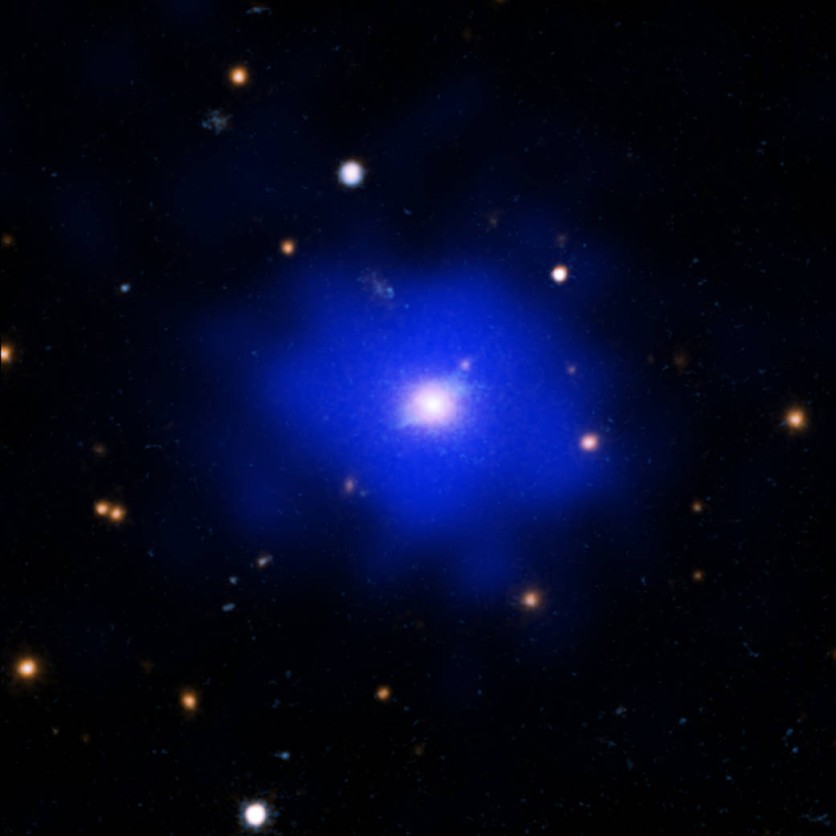NASA's Chandra X-ray Observatory has made an intriguing discovery of a surprisingly calm distant galaxy cluster, providing valuable insights into the formation of these immense structures and the evolution of the universe.
NASA released a striking composite image showing SPT-CL J2215-3537, or SPT2215 in short, in X-rays captured by NASA's Chandra X-ray Observatory (blue) and a blend of ultraviolet, optical, and infrared light from NASA's Hubble Space Telescope (cyan and orange).
This distant and remarkably young galaxy cluster was discovered using Chandra in collaboration with NSF/DOE's South Pole Telescope, the Dark Energy Survey project in Chile, and NASA's Spitzer Observatory. Detailed findings from this discovery have been documented in three research papers.

A Surprisingly Calm Galazy Cluster
The cluster SPT-CL J2215-3537 is located approximately about 8.4 billion light-years from Earth, making it visible when the universe was only 5.3 billion years old. What sets SPT2215 apart is its relaxed state, showing no signs of violent collisions with other galaxy clusters.
Galaxy clusters typically grow by merging with others, causing disturbances and asymmetries in their gas. Over time, with sufficient relaxation, the gas can take on a smooth appearance, which is the case with SPT2215.
Before this discovery, astronomers had not found a relaxed galaxy cluster at such a great distance, as they usually undergo mergers at this early epoch.
According to NASA, SPT2215 presents another intriguing aspect with substantial evidence of star formation in its center. This cluster has a huge galaxy in its middle, which in turn has a supermassive black hole at its core.
The remarkable amount of star formation indicates that much of the hot material has cooled, allowing the birth of new stars without disruptions from the black hole's outbursts that typically hinder this cooling process.
This discovery addresses the long-standing question of how black holes influence star formation in their surroundings.
No Neighboring Galaxies, According to NASA
Moreover, the central galaxy in SPT2215 stands isolated, with no neighboring galaxies within approximately 600,000 light-years that match its brightness or size. According to NASA, this lack of mergers with other clusters for nearly a billion years provides additional evidence of SPT2215's relaxed state.
The three research papers on SPT2215 were published in reverse order of their release. The most recent paper, led by Michael Calzadilla and colleagues, appeared in The Astrophysical Journal on April 20, 2023.
A paper led by Adam Mantz was published in the February 2022 issue of Monthly Notices of the Royal Astronomical Society with a preprint available online, and a paper led by Lindsay Bleem et al. was published in the March 2020 issue of The Astrophysical Journal Supplement Series.
Related Article : NASA's Chandra X-ray Captures 'H' in Giant Black Hole

ⓒ 2025 TECHTIMES.com All rights reserved. Do not reproduce without permission.




